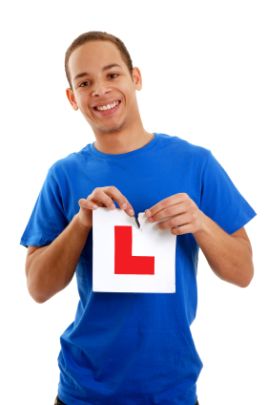What to expect at a hazard perception test
The test has fourteen different clips, as outlined in the article entitled 'how to pass the hazard perception test'.
Each of those clips starts counting down from ten to zero, in order to alert you that the clip is about to start, and that you should be ready to look at the screen to find the hazard as quickly as you can.
Because you click the mouse to tell the computer that you've identified a hazard, the computer feedbacks to you by means of a red flag appearing on the screen. There is one clip that contains two hazards, and this means that you are able to click more than once; this will mean that another flag appears and so there will be two flags when you think that there were two hazards to correspond to the two clicks that you make. Note that this gets cleared in between clips rather than building up, so each click will begin afresh without any red flags on the screen.
So, that is how the actual mechanism of the hazard perception test works - a series of clicks that you must click the mouse on at each time that you see a hazard. The best advice is to be sure that you are seeing a hazard rather than trying to guess too early. Whilst there are less marks if you are a little slower to find the hazard, it is much better to get a few marks for seeing the hazard when you are sure rather than guessing or coming in to early when something is not infact a hazard.
You should never try and second guess. Actually treating it like you really were driving and imagining what would stand out and grab your attention is a good way of doing it - when something grabs your attention the chances are that it is because it is either a potential or a developing hazard.
Related Articles...
Medical rules and driving
There are a wide range of conditions that you can hold and still be a safe driver. However there are certain conditions that will may impact on your ability to be a safe driver and therefore could...
Cost of a driving theory test
If you are learning to drive a car in the UK, then there is not just the practical test to think about.
You must also pass a theory test in order to be able to take the driving practical test...
The Advanced Driving Test
There are advantages to continuing to study driving by means of a course like the advanced driving test, because it will help to give you the chance to develop your skills even further than you had...
What to do at a box junction
The box junction is quite common but despite this there are a whole wide range of ways in which different drivers interpret what they are supposed to do at them so you will see different behaviours...
Tips on preventing car crime
It is an obvious statement that nobody wants their car to be broken into or have items stolen from their car. Yet despite this some drivers take little care in discouraging theft.
There are...
The automatic car explained
In most cases, you will learn to drive with a car that has gears in the United Kingdom.
However there are people who prefer to learn in an automatic car, and there are various driving schools...
Test your Driving Theory
Want to test your driving theory knowledge? We have all the multiple choice revision questions for car drivers together with a range of hazard perception clips.
With our unique feedback and...
Staying calm in your driving test
There is no doubt that many people get extremely nervous before the driving practical test, and whilst this can be frustrating or disconcerting, it is not necessarily a bad thing. Many people...
What are greener fuels
One of the most well known of the green fuels is something that is called Biofuel.
Biofuel is a group of different fuels rather than an individual fuel in itself, and the class contains things...
Various road markings you might find
Many drivers who are good at interpreting and understanding what a large range of road signs mean are not so good when it comes to road markings.
Some drivers appear to not even really be...
Back to home page of driving theory test questions

